GeForce RTX 4090, RTX 4080 GPU Roundup
GPUs of all types and sizes
With today's announcement of the GeForce RTX 40-series (Ada Lovelace) graphics cards, all of Nvidia's AIB partners have been busy revealing their SKUs of Nvidia's new RTX 40-series GPUs powered by the new Ada Lovelace microarchitecture.
We have now seen announcements from Asus, MSI, Gigabyte, Colorful, Inno3D, Palit, Zotac, and PNY concerning the new custom RTX 4090 and RTX 4080 models. Some brands listed their entire lineups already, and some were holding back some cards, waiting until a later date for a full announcement. But some AIB partners have not yet revealed their lineups so we will update the roundup later.
It's worth noting that EVGA will sadly not be attending Nvidia's RTX 40-series launch with brand-new cards. After a shocking announcement by the company several days ago, EVGA is no longer a partner with Nvidia and, thus, will not be making any RTX 40 series GPUs or future Nvidia GPUs.
GeForce RTX 40-Series GPU Specifications
| Header Cell - Column 0 | RTX 4090 | RTX 4080 16GB | RTX 4080 12GB |
|---|---|---|---|
| CUDA Cores | 16,384 | 9,728 | 7,680 |
| Boost Clock | 2,520 MHz | 2,510 MHz | 2,610 MHz |
| Base Clcok | 2,230 MHz | 2,210 MHz | 2,310 MHz |
| VRAM Capacity | 24GB of GDDR6X | 16GB of GDDR6X | 12GB of GDDR6X |
| Bus Width | 384-bit | 256-bit | 192-bit |
Nvidia unveiled three new RTX 40-series GPUs today at GTC, including the RTX 4090, RTX 4080 16GB, and the RTX 4080 12GB. The RTX 4090 is Nvidia's flagship, featuring 16,384 CUDA cores paired with a monstrous 2,520 MHz boost clock. The 24GB of GDDR6X operates on a 384-bit wide bus. The RTX 4090's power rating peaks at 450W.
The RTX 4080 has been announced with two flavors, each running different memory configurations and CUDA core configurations simultaneously.
The RTX 4080 16GB is the fastest of the two, featuring 9,728 CUDA cores operating at a boost clock of 2,510 MHz. The memory configuration for this variant features 16GB of GDDR6X memory paired to a 256-bit memory bus—the power envelope for the 16GB model peaks at 320W.
The RTX 4080 12GB will be noticeably slower than the 16GB model, featuring a substantial cut to its core specifications, from top to bottom. The CUDA core count has dropped substantially to 7,680 cores, reducing memory capacity to 12GB and an interface reduction to a 192-bit wide bus.
Get Tom's Hardware's best news and in-depth reviews, straight to your inbox.
But, the RTX 4080 12GB has the fastest clock speeds of the bunch, with a 2,610 MHz boost frequency, and features the lowest power consumption rating as well, coming in at 285W.
For buyers of the RTX 4080 models, you should be aware of the configuration differences between the 12GB and 16GB variants, as each one will differ substantially in performance.
Founders Edition
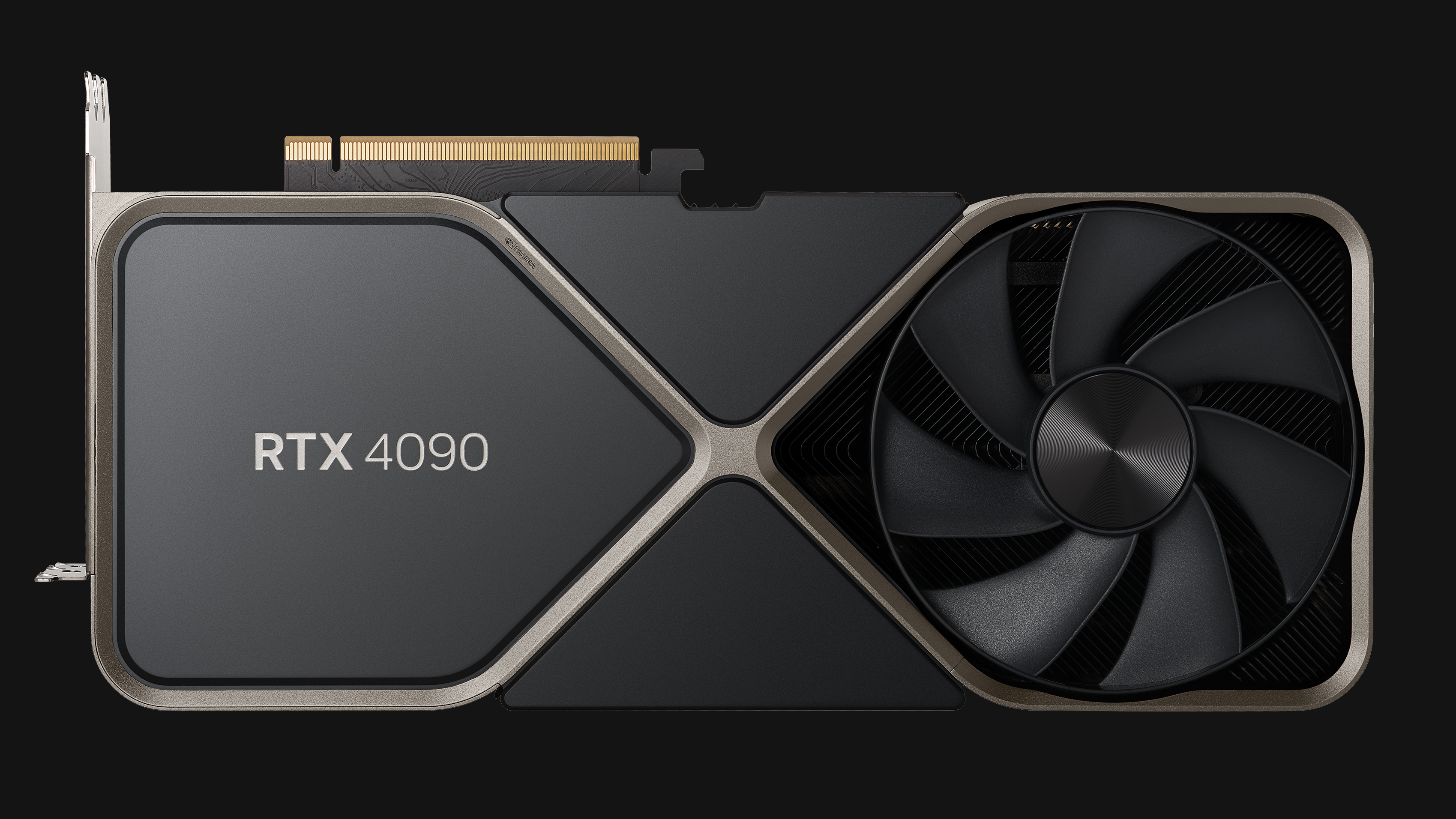
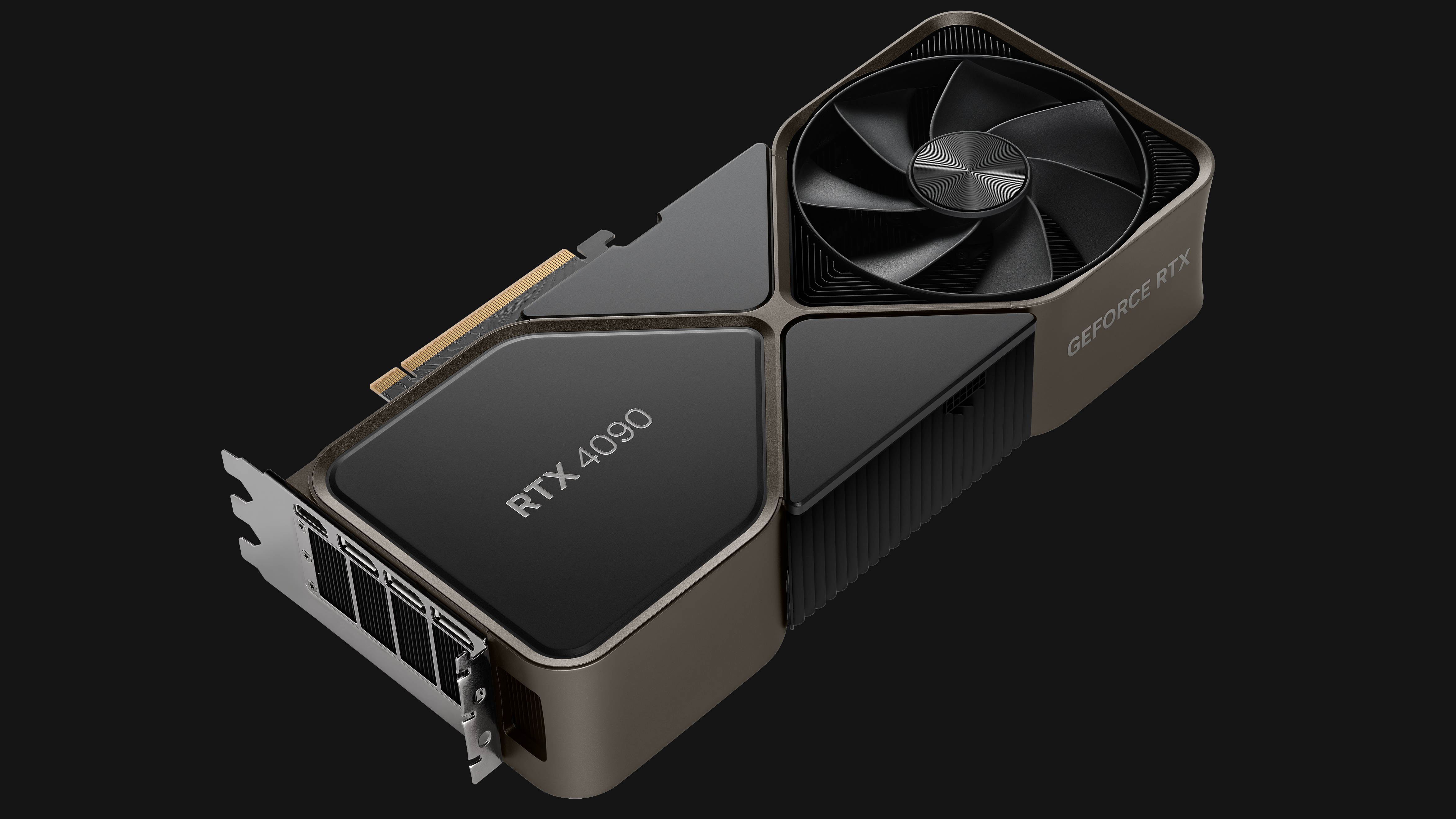
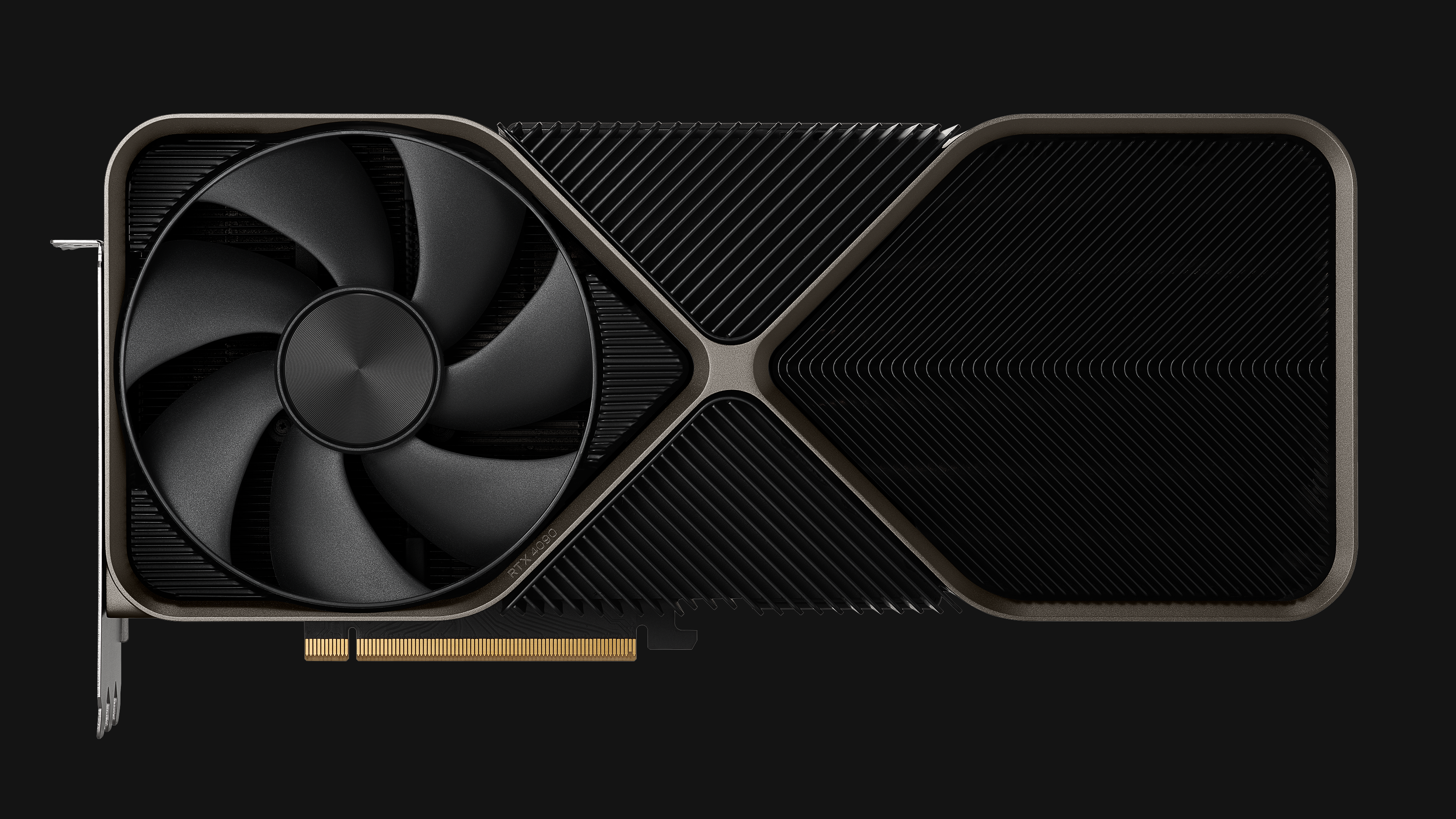
Starting with the Founders Edition models, Nvidia barely changed the card's overall design language, with the RTX 4090 and RTX 4080 Founders Edition variants featuring the same dual axial flow-through design as the RTX 30-series cards. As a result, if you didn't see the RTX 40 series badging on the cards, you would be hard-pressed to tell if these were new RTX 40-series cards or older RTX 30-series GPUs.
What has changed are some minute aesthetical differences to differentiate the new 40 series variants. Each model, including the RTX 4090 and RTX 4080, now features different color tones for the card's outer metal rails and shroud. In addition, the RTX 4090 features a dim golden accent, while the RTX 4080 16GB and 12GB retain the same glossy silvery finish as the RTX 30-series variants.
Another noteworthy but subtle change is in the Founders Edition RTX badging, which changed to a different font and is far more rounded than the RTX 30-series' boxy and aggressive styling.
Arguably the most noteworthy change to the card's aesthetics is the brand new fans that come on both RTX 4090 and RTX 4080 models. The fans have been extended slightly and protruded into the outer railings of the card. In addition, the fan blade design has been drastically re-designed, featuring flatter blades for both fans. The top fan, meanwhile, features a non-linear blade design, with slightly more rounded edges at the tips and base but straighter angles in the middle.
Nvidia says the newer fans increase fan size and fin volume by 10%, improving the cards' thermal characteristics. Nvidia, in particular, says memory temperatures improved. So we can expect similar core temperatures with the RTX 40-series GPUs but much cooler memory temperatures, which is always good.
Internally, Nvidia says it has upgraded the Founders Edition's power delivery system to 23 phases but didn't say much more than that. We suspect Ada Lovelace has higher transient spikes than Ampere, despite overall power consumption results staying the same compared to the RTX 30-series GPUs, which would explain the power delivery upgrade.
Another upgrade includes the new 16-pin power connector, supported by the new ATX 3.0 standard for power supplies. Each Founders Edition variant will get a single 16-pin power connection. But, for owners of current power supplies lacking the 16-pin, a triple 8-pin power adapter will be included, plus an optional fourth connector for more overclocking headroom.
PNY
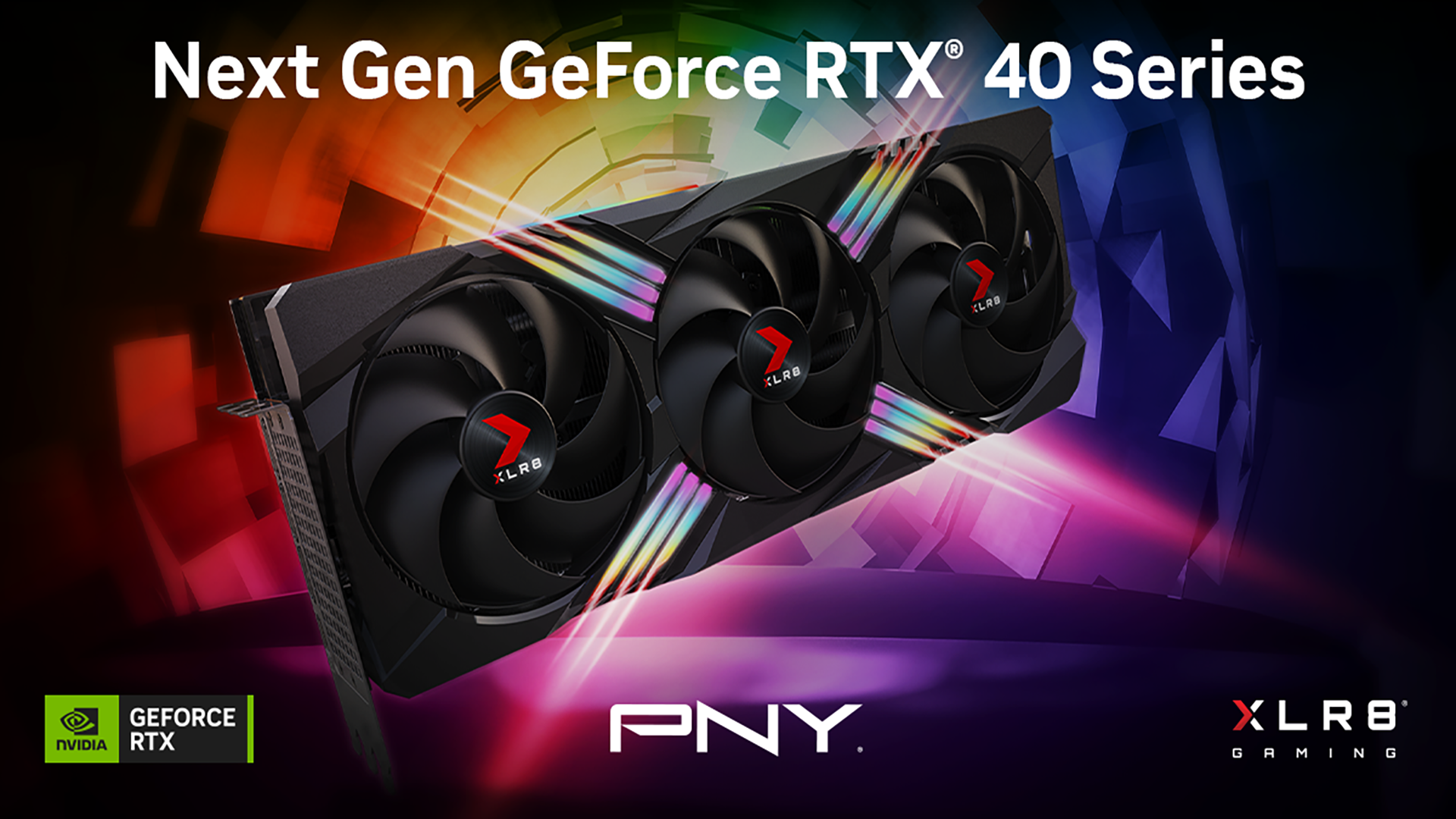
PNY has announced three new RTX 40 series graphics cards, including the XLR8 Gaming RTX 4090, XLR8 Gaming RTX 4080 16GB, and XLR8 Gaming RTX 4080 12GB.
All three cards sport a new triple-fan cooling solution featuring a black glossy finish, with a mixture of matte accents placed around the edges of the shroud. Towards the middle fan, four RGB accents protrude outward angularly, shaping an X's form to finish the look.
Each model will feature a different heatsink design, with the RTX 4090 getting the best of the bunch, featuring a heatsink with eight heat pipes and a base vapor chamber combined. The RTX 4080 16GB will receive a similar heatsink with eight heat pipes but will also lack vapor chamber cooling. Finally, the RTX 4080 12GB will get a slightly downgraded seven-heat-pipe heatsink with no vapor chamber due to its lower power rating.
Each model will come with DisplayPort 1.4a and HDMI 2.1 connectors.
The RTX 4090 variant will be available starting the first half of October, while both 4080 models will be available beginning in the first half of November. Retailers featuring the cards will include PNY themselves, Amazon, BestBuy, and additional retail partners.
Zotac
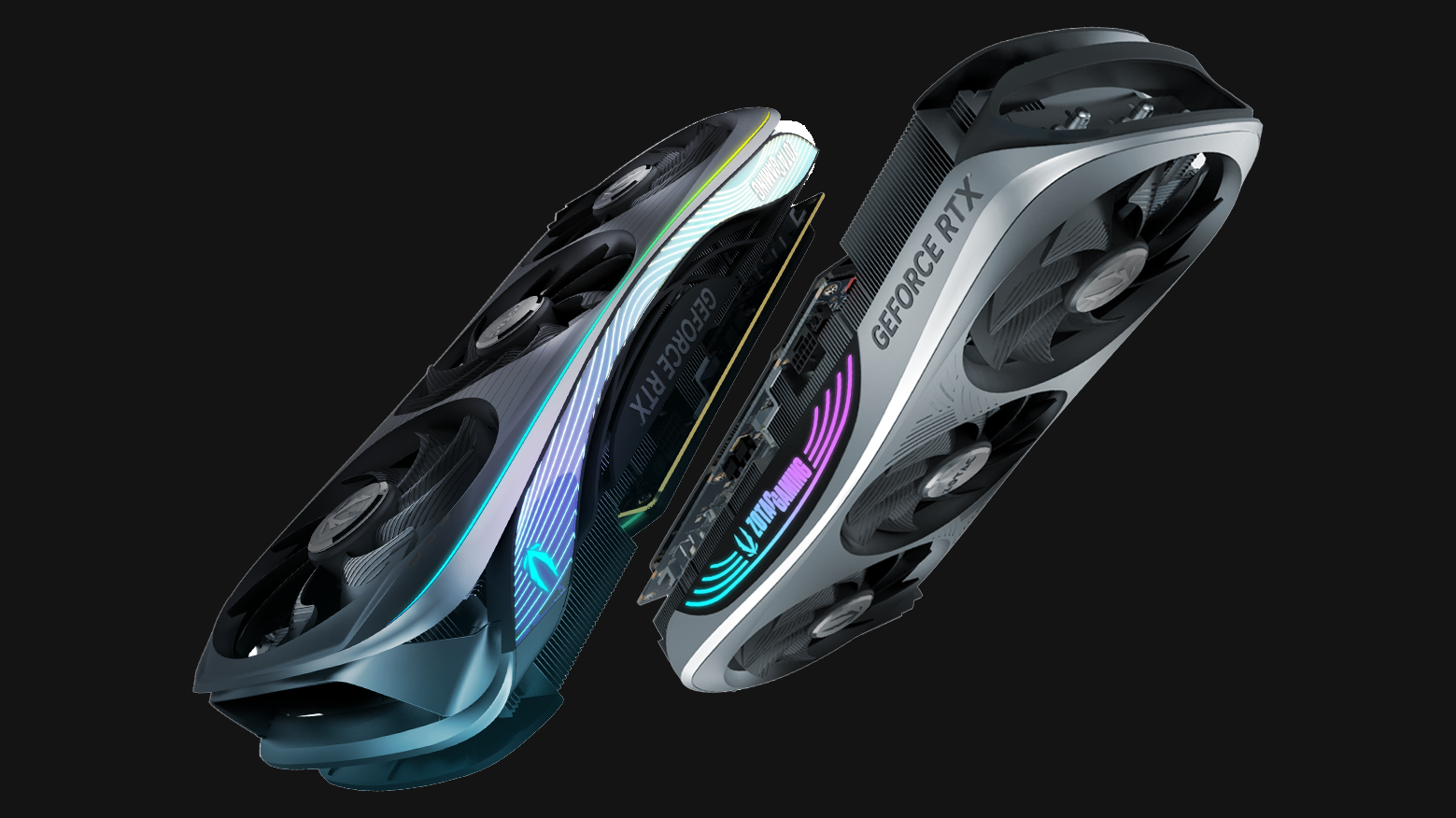
Zotac has announced nine new RTX 40 series variants, with three models each, including the RTX 4090, RTX 4080 16GB, and RTX 4080 12GB. In addition, these models include the AMP Extreme AIRO, Trinity, and Trinity OC variants.
The Extreme Airo is Zotac's new flagship model - starting with the 40 series, designed primarily for enthusiasts. As a result, expect this card to be a great overclocker, with excellent thermals and beefy power delivery, to boost power limits as high as they can.
The Trinity has made its return as Zotac's premiere mid-range SKU. This model will be a cheaper variant of the AIRO, with slightly cut-back features. The OC variants will be the factory overclocked models.
The Trinity and the AIRO feature a new aerodynamic-inspired design language, featuring rounded designs across the entire card. In addition, the cards are color themed in grey and silver, with large "Zotac Gaming" logos on the sides, featuring RGB illumination.
With the 40 series, Zotac is introducing the most powerful cooling system it has ever built, known as IceStorm 3.0. In the case of the Extreme AIRO, this architecture provides twice the height and blade width of Zotac's previous designs for enabling optimal airflow.
In the case of all models, each one comes equipped with an aluminum fin stack spanning the entire length of the card, paired with a vapor chamber and nine composite copper heat pipes. Power delivery will come in the form of a 24+4 VRM setup.
These new cards are reportedly quieter, with a new counter-rotating center fan to reduce air turbulence. All models will feature anti-vibration pads to minimize noise as well.
Colorful
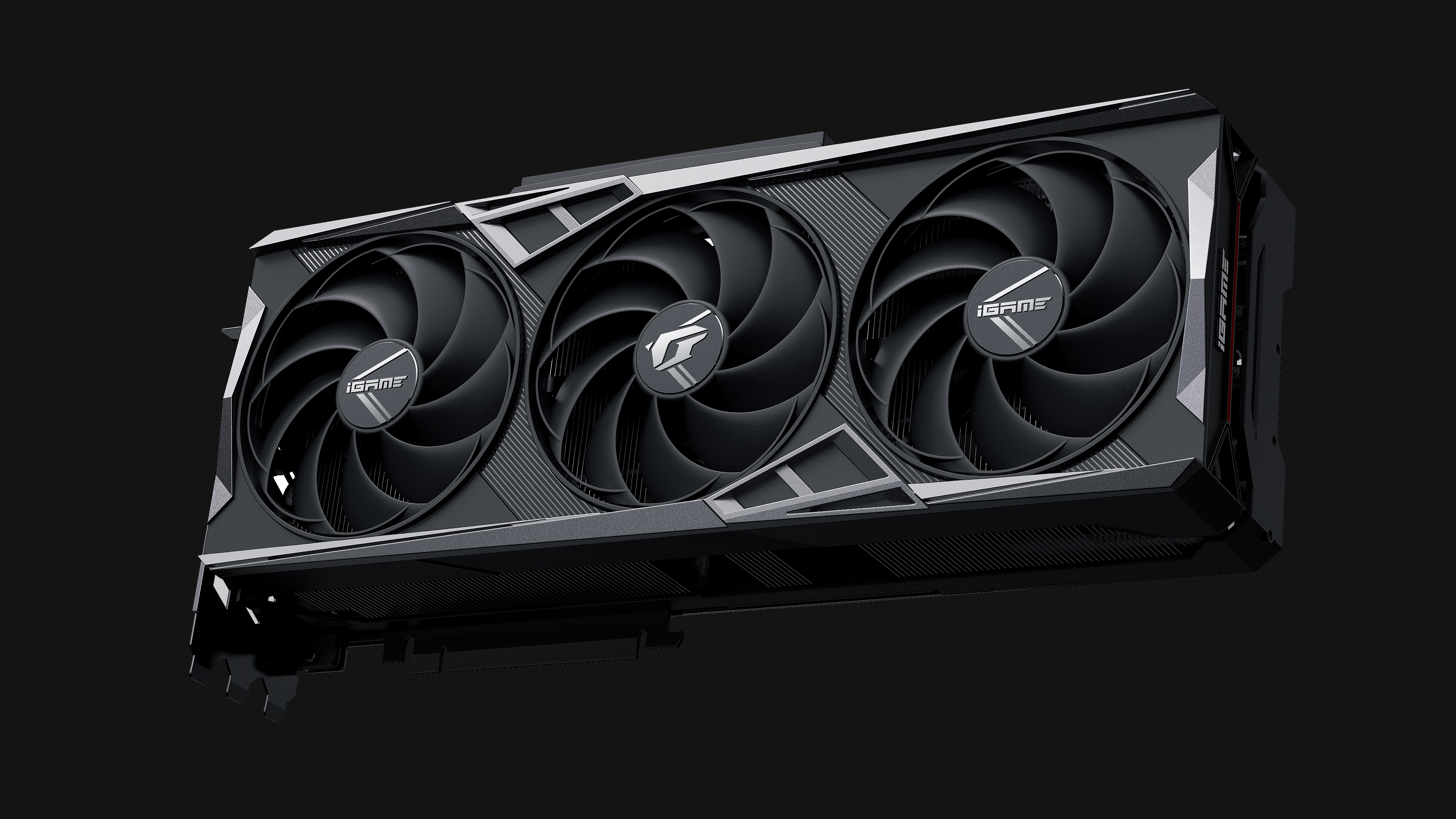
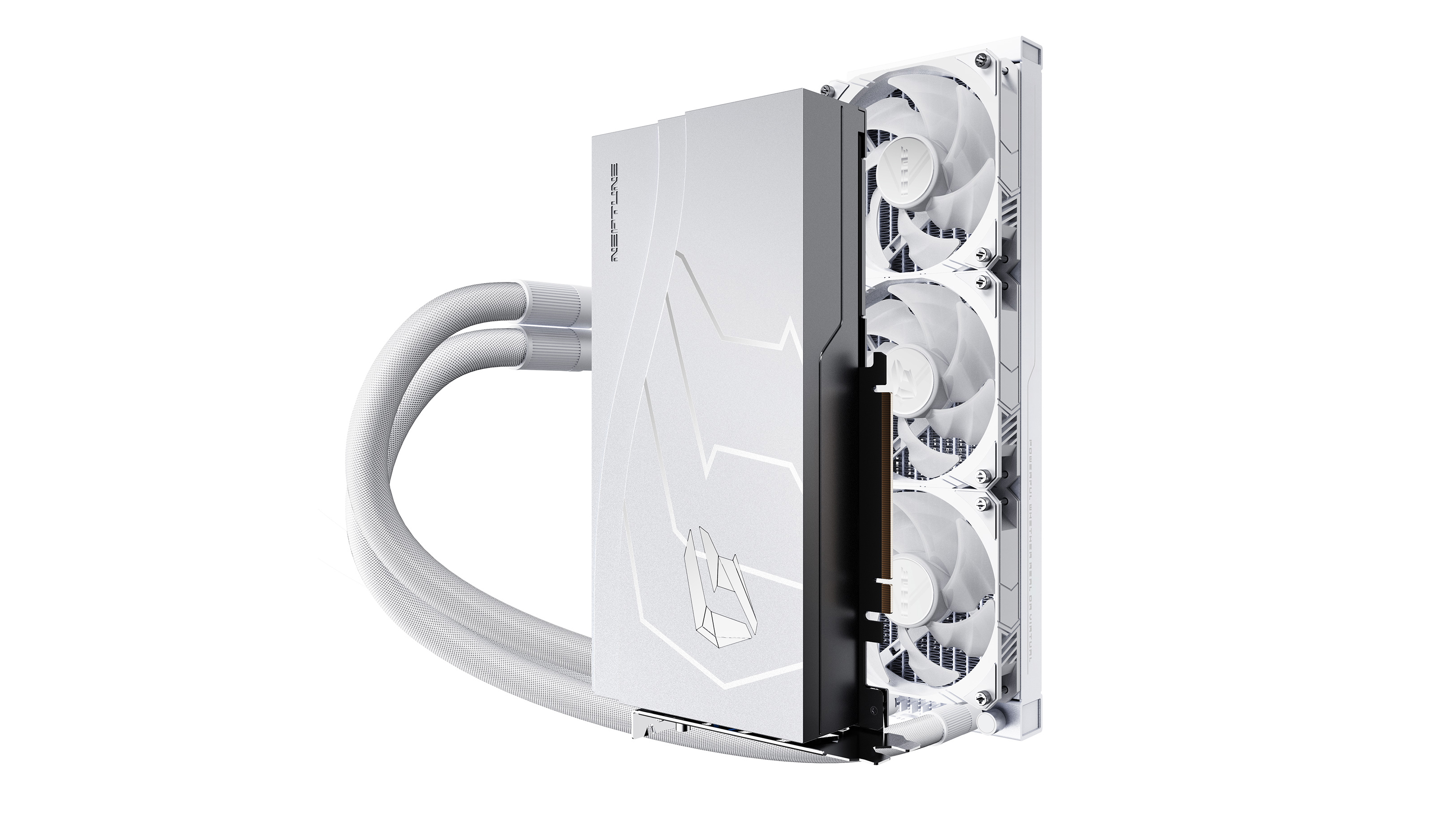
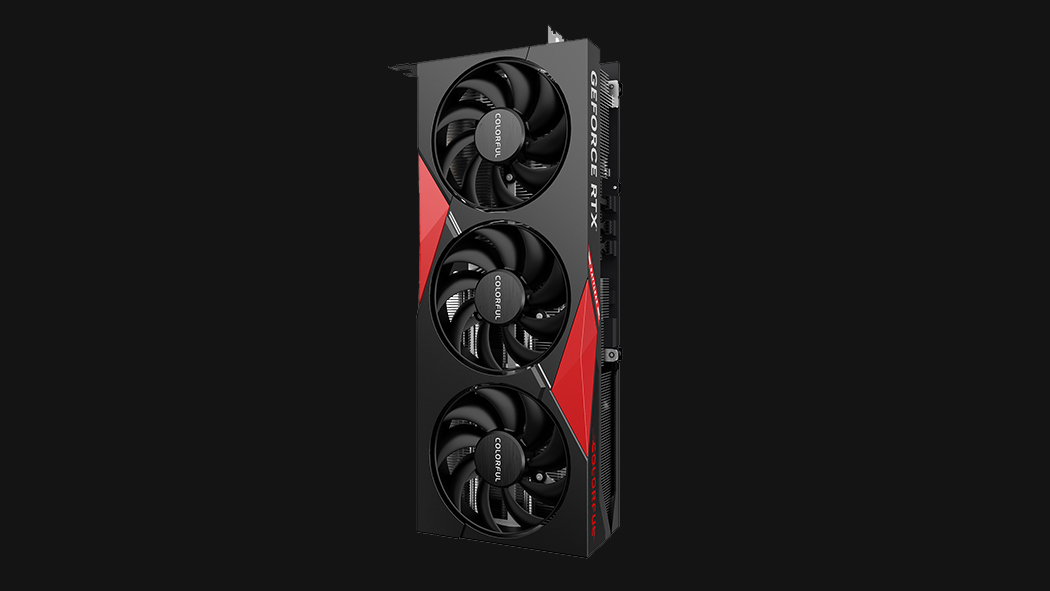
Colorful has announced nine new 40-series graphics cards for the RTX 4090 and both RTX 4080 models. The models will span from flagship Vulcan air-cooled models to Neptune liquid-cooled variants and budget-focused models.
Starting with the flagship Vulcan models, these models will come on the RTX 4090, RTX 4080 16GB, and RTX 4080 12GB, featuring a triple-fan cooler design with a stealthy black finish. The card's color profile is almost entirely black, save for metallic silver accents surrounding the edges of the shroud.
These cards come with a new and improved fan design, known as the Hurricane Scythe Blade, that promises to improve airflow at lower noise levels compared to Colorful's previous Storm Chaser fan design.
A unique feature of the Vulcan cards is a new LCD pre-installed directly on the graphics card. But, it is also magnetized and detachable, allowing for use outside of the computer chassis. In addition, the screen features a resolution of 800 x 216.
The Neptune series features new liquid-cooled RTX 40 series cards, featuring models for the RTX 4090 and both RTX4080 variants.
These cards will come in a white and silver color scheme and cooled by a beefy 360mm radiator paired with three 120mm fans. Cooling the card is a full-copper water block that covers both the card's GPU core and the memory modules. Thanks to the liquid-cooled nature of the Neptune series, these 40 series cards will be exceptionally thin at just 2 PCIe slots in thickness.
Finally, Colorful has an entry-level NB EX model for all three Nvidia RTX 40 series models. This card does not see any upgrades over the previous variants and retains the same black color scheme with red triangle accents.
Asus
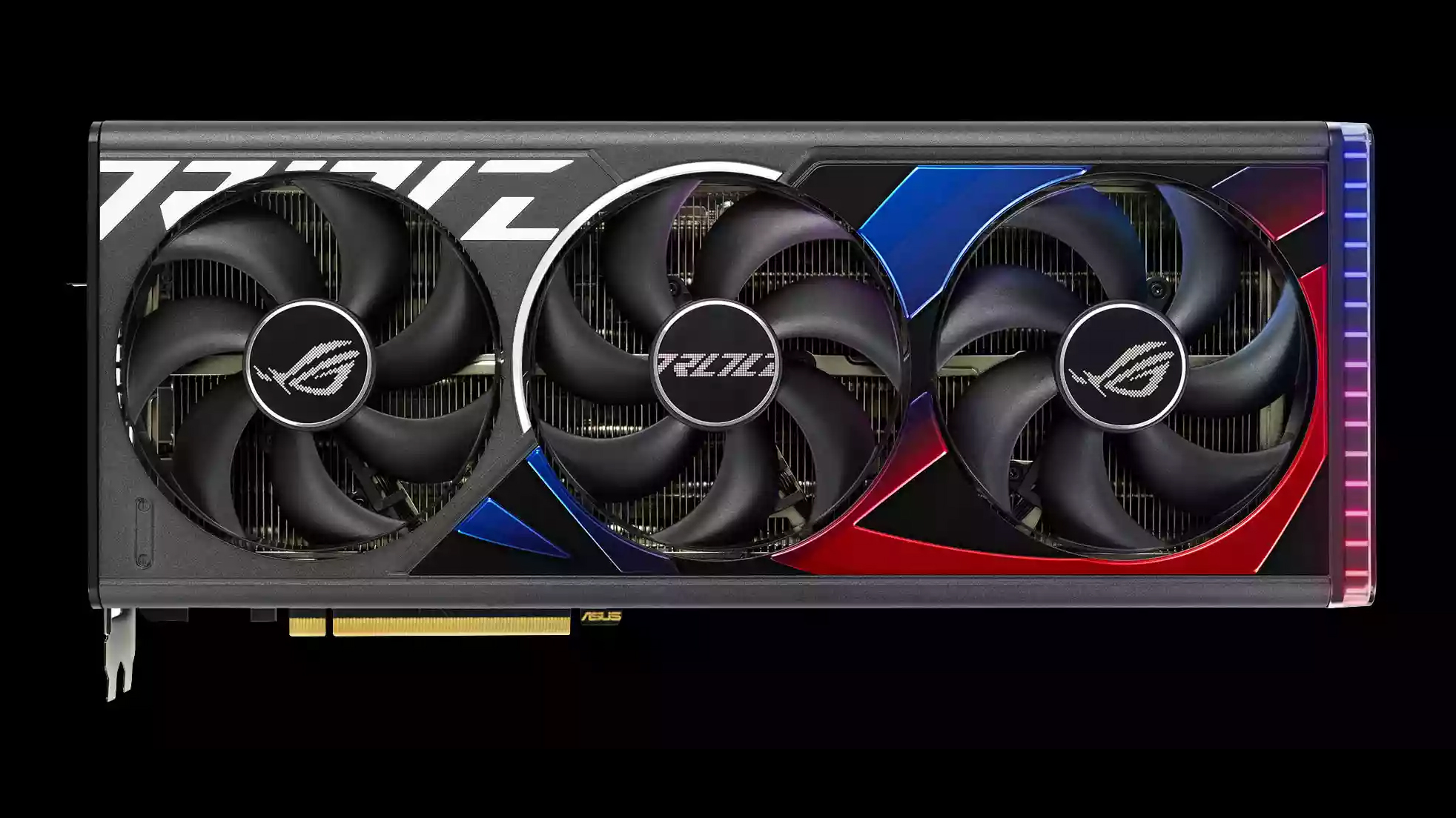


Asus has announced new ROG Strix and TUF Gaming models with the launch of Nvidia's RTX 40 series GPUs. Asus will have six models in total, with three ROG Strix models and three TUF Gaming variants - to cover the RTX 4090, RTX 4080 16GB, and RTX 4080 12GB.
Asus has completely redesigned the ROG Strix cooler for the RTX 40-series GPUs with a brand new design language that looks nothing like the previous models. If anything, it resembles graphics cards from the 2000s with flashy graphics.
The new ROG Strix cooler now comes in a more traditionally shaped design, with a perfectly rectangular shroud coated with a generic matte grey/black finish. But, to counter this, the front features a ROG logo that takes the form of a wholly graphic design.
The graphics on the front is by the center and right fans and takes on the logo of Asus' ROG gaming brand. The logo is on a pure black background with a red theme the logo itself, which transparently turns into blue as you pan from right to left. To the top left, we have some alien-looking text in plain white to complement the colorful graphics to the right.
To the rear of the card, we have fully RGB illuminated borders encompassing the entire outer edge of the bottom of the card, along with an RGB "Republic of Gamers" logo on the side. Finally, the top houses the backplate featuring the exact alien-looking text on the front.
Regarding ventilation, Asus took things to 11 with the new ROG Strix cooler. The aluminum heatsink is perfectly visible across almost all sides of the card, including the rear backplate, to a large degree. The heatsink is particularly unobstructed on the side, where nothing is covering the heatsink at all.
It is excellent for airflow purposes and ensures the cooling solution will not have any problems pushing heat out of the card. Asus says the RTX 4090 version of the ROG Strix has a design to tame 500W thermal load, which should theoretically be plenty for a RTX 4090.
Asus has also upgraded the Strix cooling solution with newer, thicker fan blades featuring seven blades in total ring barriers that provide 23.8% more airflow and 19.3% more pressure than its predecessor. In addition, power delivery includes a 12+4 phase design comprising 70A power stages for the 4090 variant.
The RTX 4090 and RTX 4080 versions will be a 3.5-slot design and 357mm long, consisting of a die-cast metal frame, shroud, and backplate. The structure of the card has also been upgraded with ultra-tight tolerances to prevent PCB sagging or warping. The 4080 model will feature the same structural integrity but a slightly smaller form factor at 3.15 slots thick and 336mm long.
The TUF variant for the RTX 40-series has received a slight redesign, with subtle differences in the design language between its 30 series predecessors. For instance, the angular cut-outs at the front and the protruding TUF Gaming logo are now gone.
In essence, the TUF Gaming version designed for the RTX 40-series has had its edges more rounded and overall appears to be a more mature design.
The TUF gaming cooler design now shares the same excellent ventilation characteristics as the ROG Strix 40-series cards, with wide gaping holes on the sides and the backplate for air to traverse unimpeded.
The TUF and ROG Strix cards also feature upgraded heat pipe designs from the 30 series predecessors, which cover more surface area, and are more efficient.
The RTX 4090 and RTX 4080 16GB TUF Gaming models measure 348mm long and 3.65 slots in thickness, while the RTX 4080 12GB measures 305mm long with a thickness of 3.25 slots.
Gigabyte
So far, Gigabyte has announced new AORUS models of the RTX 4090 and RTX 4080 16GB and 12GB, including new details on the 4090 variant in particular.
The Aorus cooler on the RTX 4090 comes with a redesigned aesthetics. It now features three separated fans installed in a traditional layout, compared to the previous design, which consisted of two outer fans and one inward fan with overlapping blades.
The shroud's aesthetical design has also changed, featuring a mirror-like finish on the right of the card, with an RGB illuminated AORUS mirror-like logo to the top right. In addition, gigabyte has incorporated LEDs into every fan blade on the card, giving each fan a halo lighting effect when running. The fans also include a new "Bionic shark fan" design, with the shark's dermal denticles surrounding the body of each blade. Gigabyte says this gives the fans increased static pressure with a reduction in noise levels.
Gigabyte has also upgraded the heatsink with bigger fins over the 3090 variant, which gives the 4090 Aorus a 30% increase in surface area. In addition, the heatsink directly cools a vapor chamber cooling solution featuring composite heat pipes.
As with other brands, Gigabyte has also introduced vast gaps into the Aorus 4090, including the sides and the backplate area, so that air can travel freely without obstruction.
So far, this applies specifically to the RTX 4090 Aorus version. Still, Gigabyte has announced that Aorus versions of the 4080 16GB and 12GB are coming soon, so expect most of the 4090 version's attributes to carry onwards into these lower-end models.
Palit
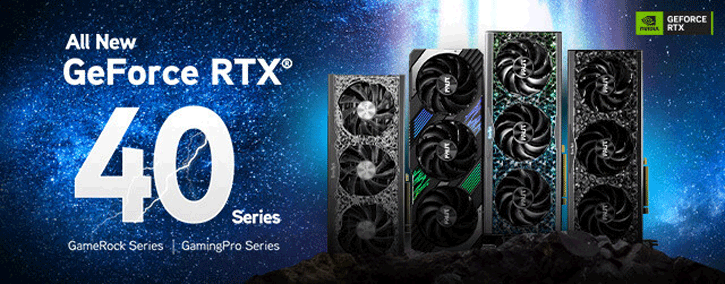
Palit is introducing a dozen now RTX 40 series GPUs into the market, including three RTX 3090 GameRock variants, three 4080 16GB GameRock models, four RTX 4080 12GB GameRock versions, and two RTX 4080 12GB GamingPro models.
The new Gamerock models will feature a new cooler design featuring Y Formula Fins that improve the cooler's airflow efficiency. In addition, it arrives with composite heat pipes and a "wide" vapor chamber.
Aesthetically, not much has changed with the GameRock; the card still features the same crystalline finish as the previous model, with full RGB illumination underneath all those crystals to give it its elegant look.
Palit is also introducing a lower-end GamingPro model to the RTX 4080 12GB, which shares many of the same cooling technologies as the GameRock. But it feature's an entirely different aesthetic finish, incorporating an aggressive and angular matte black theme accompanied by many accents, including silver, green, and blue colors.
MSI

MSI is introducing new Suprim, Suprim Liquid, Gaming Trio, and Ventus models of the RTX 4090 and RTX 4080 models.
The new Suprim cards come with MSI's Tri Frozr 3S cooling system, Torx Fan 5 fans, ten heat pipes, and an upgraded "Airflow Control" fin stack featuring "wave-curve 3.0" edges connected to a vapor chamber cooler design for the RTX 4090 and 4080 16GB. In addition, the 12GB 4080 will receive a nick-plated copper baseplate instead.
The exterior is very similar to the 30 series variants, with subtle changes to the metallic accents positioned on the outsides of the card as opposed to inward. Besides this, there aren't any other differences to note. The 4090 will be 3.75 slots wide; the 4080 16GB will be 3.75 slots wide, and the 4080 12GB 3.5 slots wide.
But what is new for the Suprim series is a new lineup aimed at liquid cooling. This lineup carries the Suprim Liquid moniker, featuring AIO liquid-cooled versions of the RTX 4090. This version has a 240mm radiator and a pair of MSI Silent Gale P12 120m fans. At the same time, a single TORX 5.0 fan resides on the card itself and cools the less critical components of the GPU's PCB.
Aesthetically, the Suprim Liquid features a metallic finish from top to bottom, accompanied by an angled RGB strip to the bottom of the card - close to the fan.
The Gaming Trio lineup features upgrades too, and now features the new Tri Frozr 3 cooling system, paired with TORX 5.0 fans. Plus, a new dual bios feature for switching between Silent mode or "gaming mode" for more performance.
Like the Suprim, aesthetic changes are minimal with the new 40 series Gaming Trio models, with just some modifications made, including extensions made on the angular RGB accents and alterations to the shroud's angular design. The 4090 will be 3.75 slots thick, 4080 16GB 3.25 slots wide, and 4080 12GB 3 slots thick.
The Ventus models don't have any significant upgrades to speak of besides the fact they are now running TORX 4.0 fans. The Ventus aesthetic remains the same as previous designs, with a "no frills" black and silver finish. The 4080 16GB will be three slots thick, and the 4080 12GB 2.5 slots wide.
Inno3D

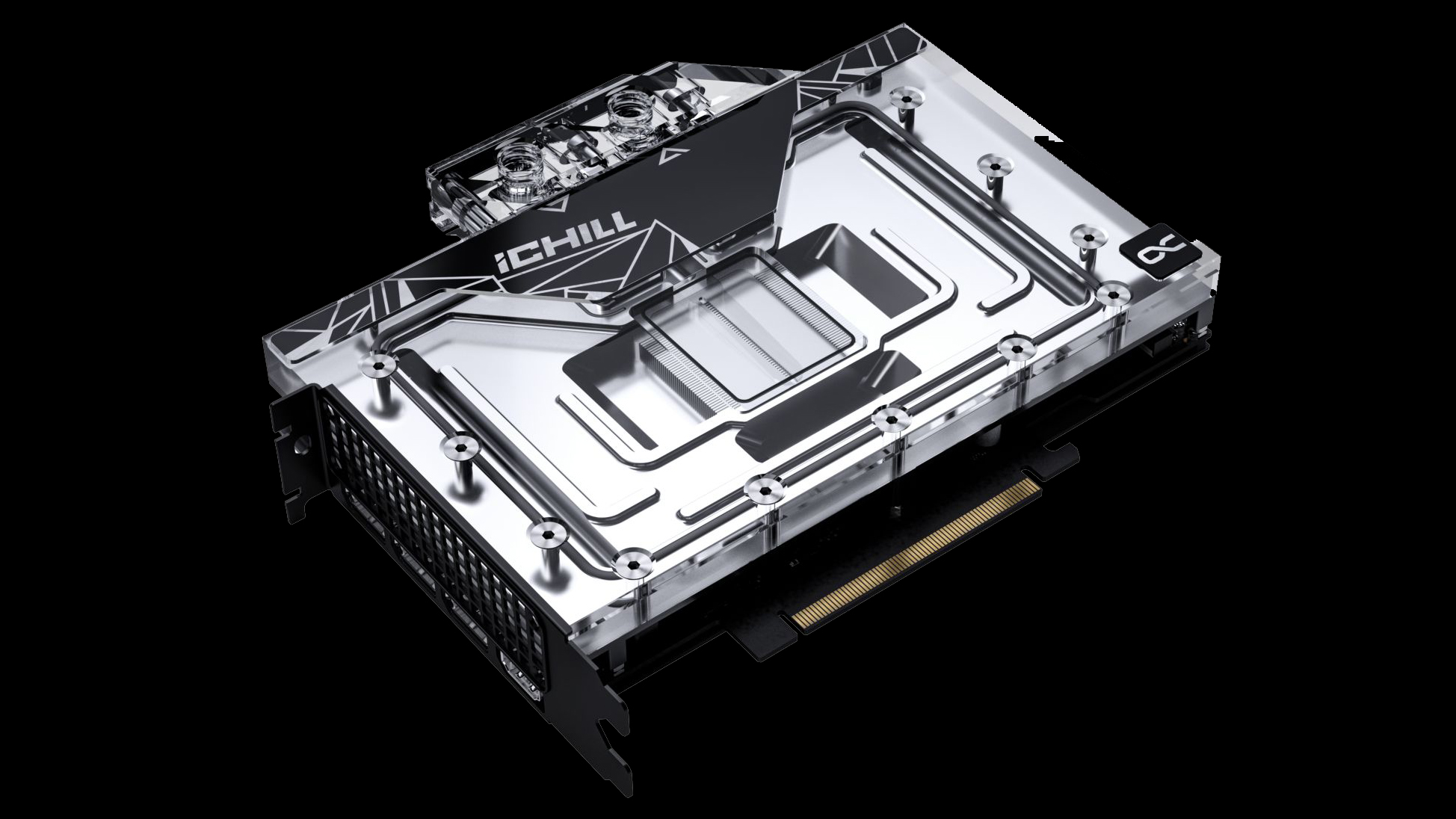
Inno3D has announced several new RTX 40 cards, including air-cooled and liquid-cooled models, belonging to the iChill Frostbite, iChill Black, iChill X3, and X3/OC lineups.
The iChill X3 model will come with the RTX 4090, featuring a triple-fan cooler design and a black finish, accompanied by triangular RGB lighting textures on the top and bottom of the card.
For cooling, the card uses 98mm scythe blades to maximize airflow and feeds air into a large vapor chamber cooler with nine total heat pipes.
The 4090 X3/OC is Inno3D's entry-level design, featuring a metallic and matte grey finish on the shroud. The card is 336mm long and 145mm high and takes up over three slots in thickness. Like the iChill X3, the X3/OC features scythe 98mm blades and a heatsink powered by nine heat pipes, and a vapor chamber cooler.
The iChill Frostbite is the company's new flagship water block variant of the RTX 4090, featuring a nickel-plated copper cooling design and a see-through shroud.
The iChill Black appears to be the company's more mid-range liquid cooling solution featuring RTX 4090 and RTX 4080 16GB versions. Most notably, the card's plumbing connects at the rear instead of the side, which should improve cable management.
The card features an all-black finish, with a mirror-like accent to the bottom left, featuring Inno3D's iChill branding and a snowflake logo.

Aaron Klotz is a contributing writer for Tom’s Hardware, covering news related to computer hardware such as CPUs, and graphics cards.
